AirVenture began with soggy start. After several inches of rain from a massive storm on Saturday, the field closed early to all aircraft parking on the grass, so arrivals were turned away until Sunday afternoon. And even at that, only a few planes got in … at one time, only tundra tires were allowed on the grass! But then the floodgates opened, and hundreds upon hundreds of planes arrived at the same time. Hats off to the EAA staff, their on-the-ground volunteers, air traffic controllers, and the pilots for keeping this gaggle safe, efficient, and organized. EAA overcame all of the challenges and the show bounced back with lots of airplanes, exhibits, and seminars for what turned out to be a brilliant week of fine weather and great aviation.
This was EAA’s 50th anniversary of its annual convention continuously being held in Oshkosh. (This was their 67th gathering.) The first convention hosted something like 12 airplanes and 8 campers in 1953. This year, there were more than 10,000 aircraft, 16,807 aircraft operations (that’s something like 125 takeoffs and landings per hour), and an estimated 40,000 campers. Things have changed a bit.
Spirit of AirVenture
With all the nostalgia floating through the air because of the 50th anniversary, it made me wonder what it was like before the 10,000 aircraft and hundreds of thousands of visitors. Was there anything that remains from their earliest days?
Indeed there is. I found it in places like the Emergency Airplane Repair barn (hang tight for more on that below). But it was most prevalent in some of the out-of-the-way places … like the Aeroplane Workshop and Homebuilders Hangar, where I saw no less than 10 instructional demos going on simultaneously. Need to learn sewing fabric? Or how build a wing spar? Or witness how riveting works? This is where you can learn from others who not only have the knowledge and experience but also want to share it.
Then there were also the impromptu exchanges … for example just crouching over an engine, one-on-one, in a debate over the finer points of … whatever.
And let’s not ignore the passionate dreamers. The ones who concoct some crazy idea and bring it to AirVenture to share with anyone who will listen. For example, Kazuhiko Hachiya. Simply strap on a turbine powered wing, bring it to Oshkosh, and you have an instant audience.
This is the kind of genuine AirVenture that perpetuates year to year.
Emergency Aircraft Repair for 55 years
There’s another part to AirVenture that for me shouts out, this is what it’s all about. I saw a sign I’d never seen in the 19 years I’ve attend AirVenture: Emergency Aircraft Repair. Two ailing airplanes were parked near a small building, so I decided to see what this was about.
There I met Jim Smith from Davenport, Iowa. He sat down with me to tell about this group and how they got started.
“55 years ago at the [EAA] convention in Rockport, Ill, we had a plane break down. He didn’t have any tools, so I helped scrape together what he needed from the others … a screwdriver here, some sockets there. Afterwards, I told Paul [Poberezney] we needed to bring some loaner tools to future conventions. He thought that was a great idea, so we started up the repair barn, which was really just a tent.” Since then, Jim (pictured below in the current barn) has helped organize and grow this service into a robust resource for pilots-in-need, and it’s now set up in a permanent structure.
The Emergency Aircraft Repair loans tools and expertise. Jim quickly pointed out, “We don’t do the repairs. We have four full tool boxes and a good set of bench equipment … just about anything someone needs to perform a repair.”
The repairs range from minor to major. “Yesterday, we loaned one fellow the tools he needed to disassemble his Piper Cub and put it on a truck to take home.” And how many pilots use this service? “About 250 each year,” Jim told me.” And the charge? “Nothing. We’re here to help. But if they want to, the aircraft owners can make a donation to help us buy new tools and equipment.” And this modestly was 100% accurate. While I hung around, I heard every person returning tools ask how much they owed. The volunteers said there was no charge. But if pressed, the volunteers simply pointed toward the donation jar. Not required, not expected, but very much appreciated. The sense of community runs strong at AirVenture, and this service paints that picture beautifully.

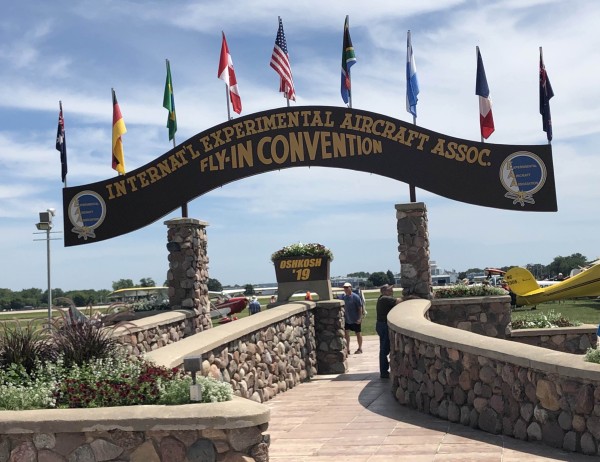
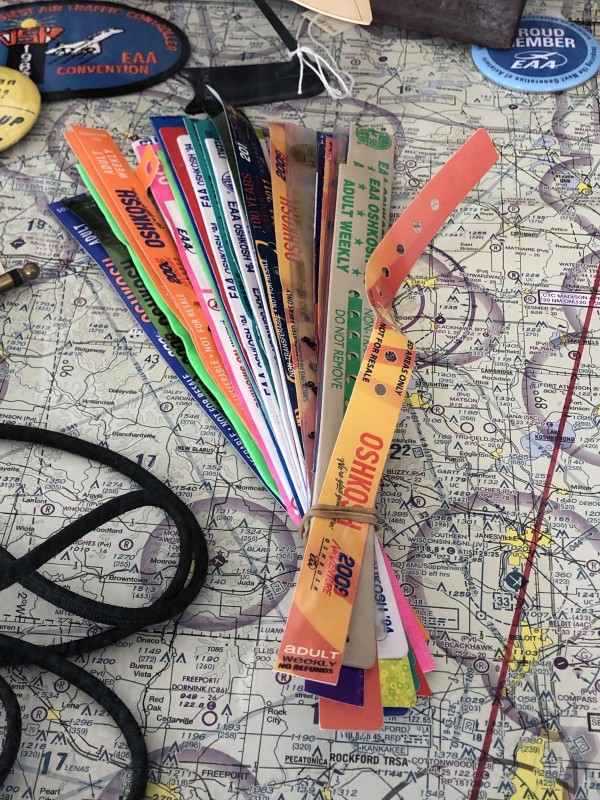
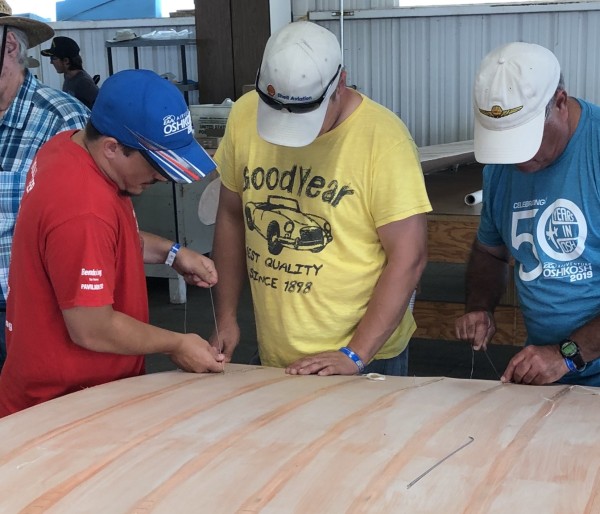
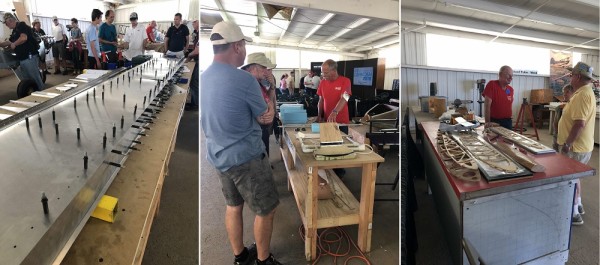
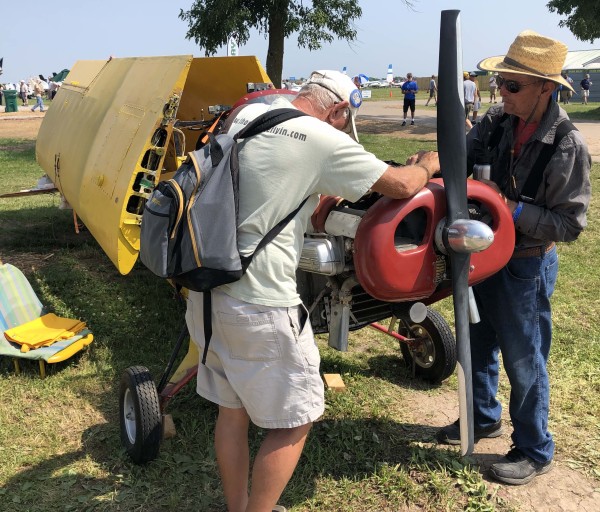
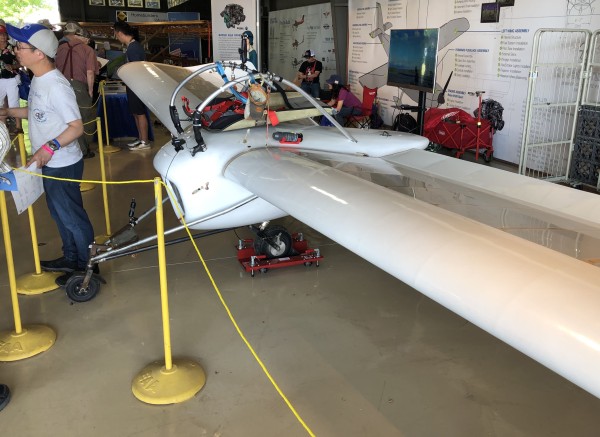
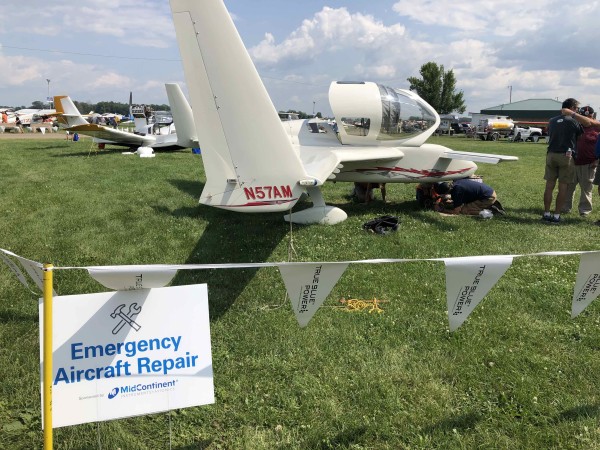
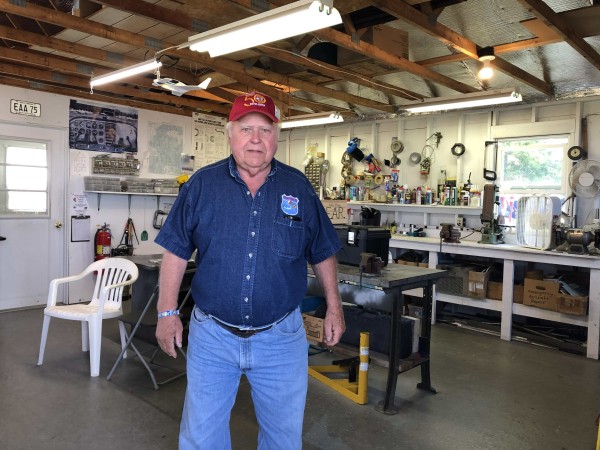
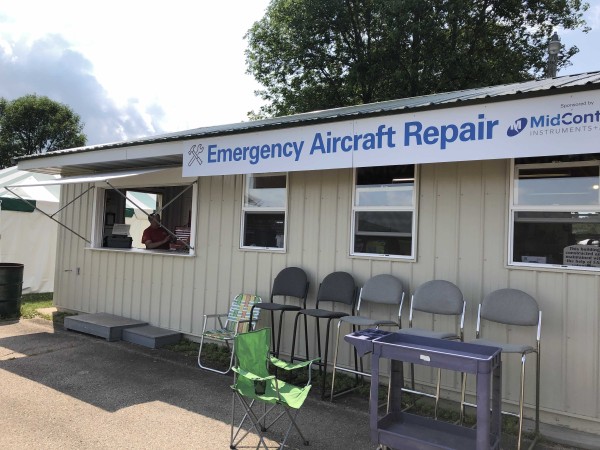
No comments yet.